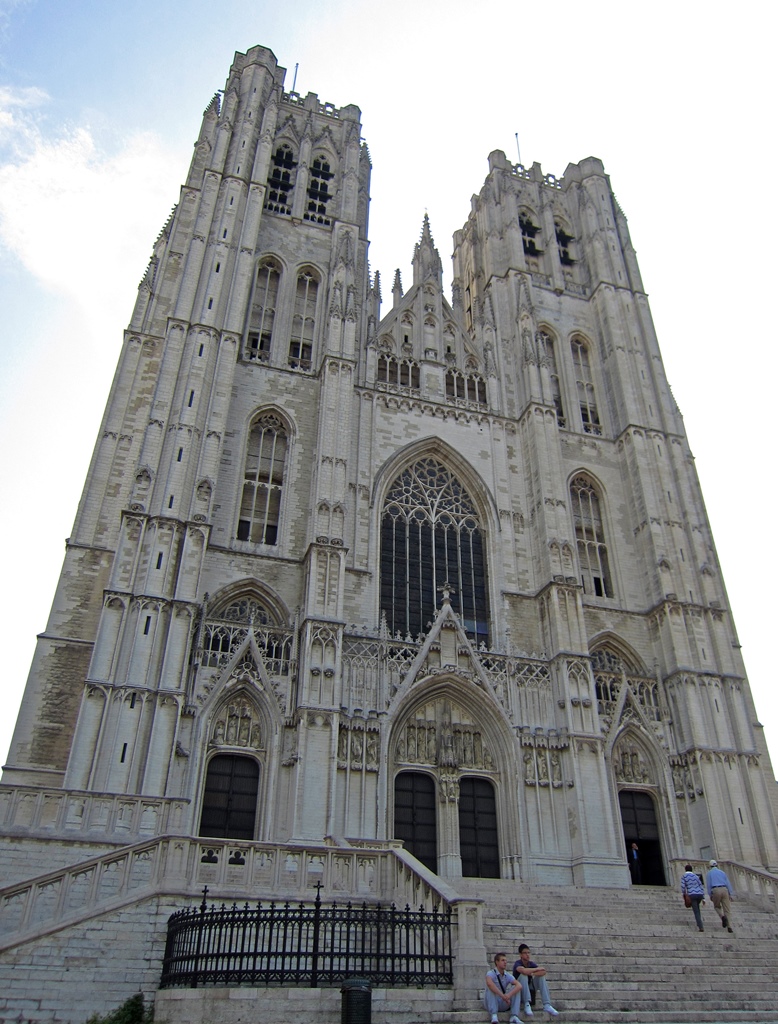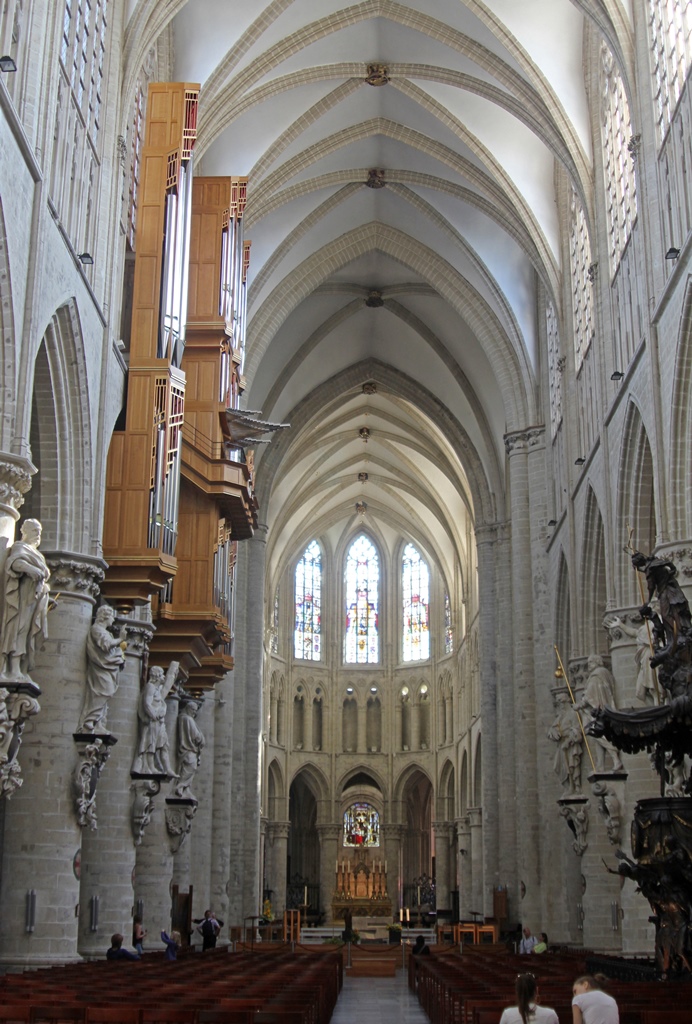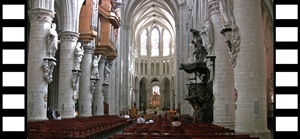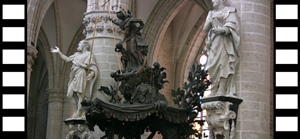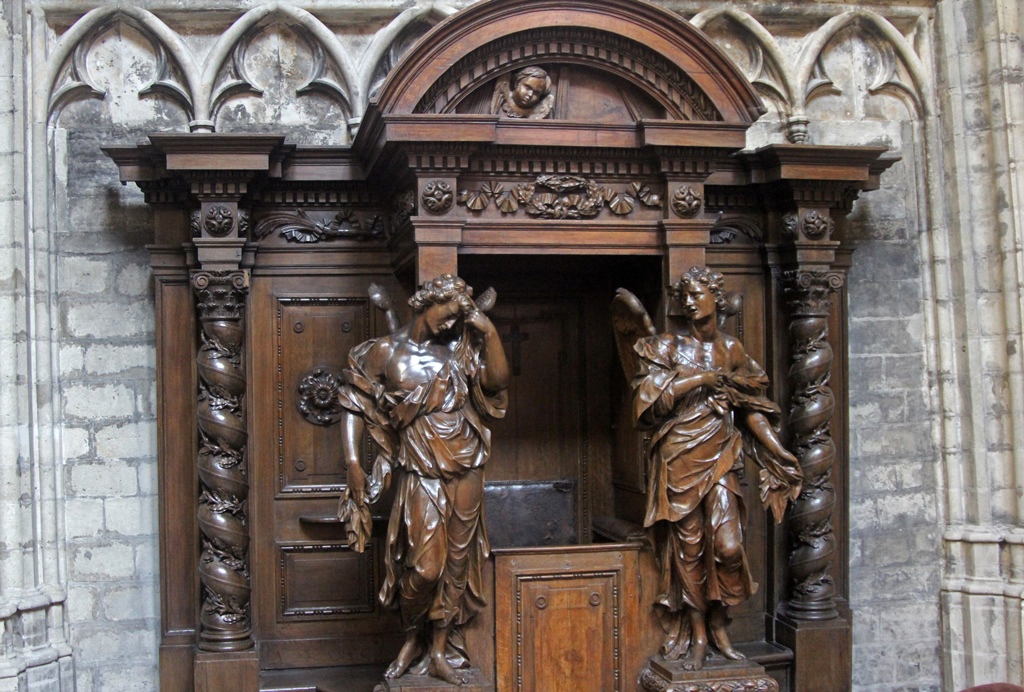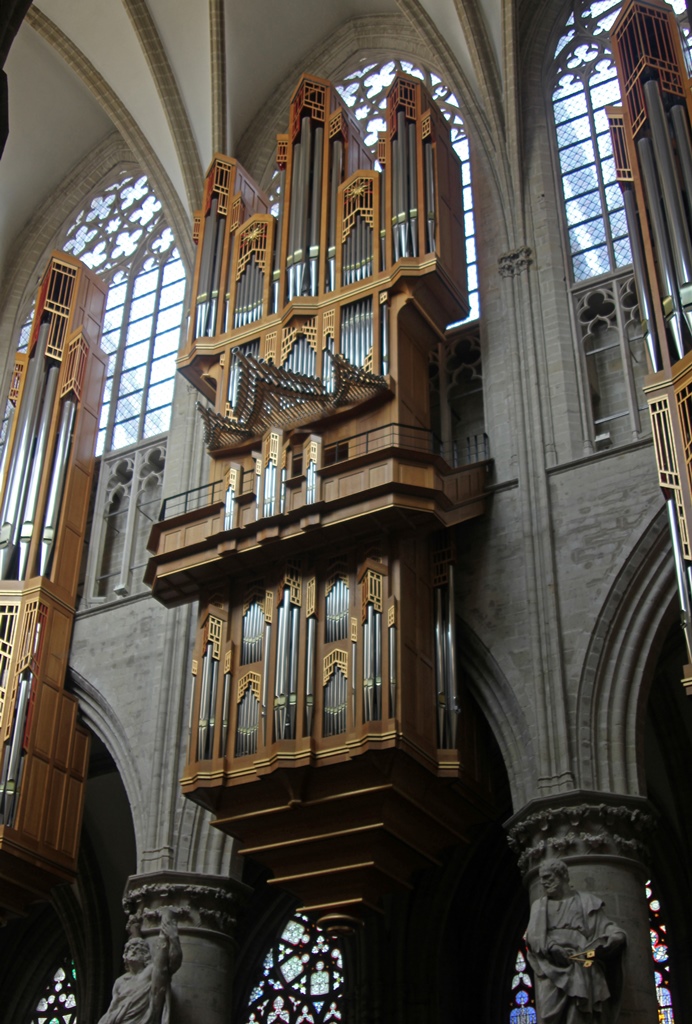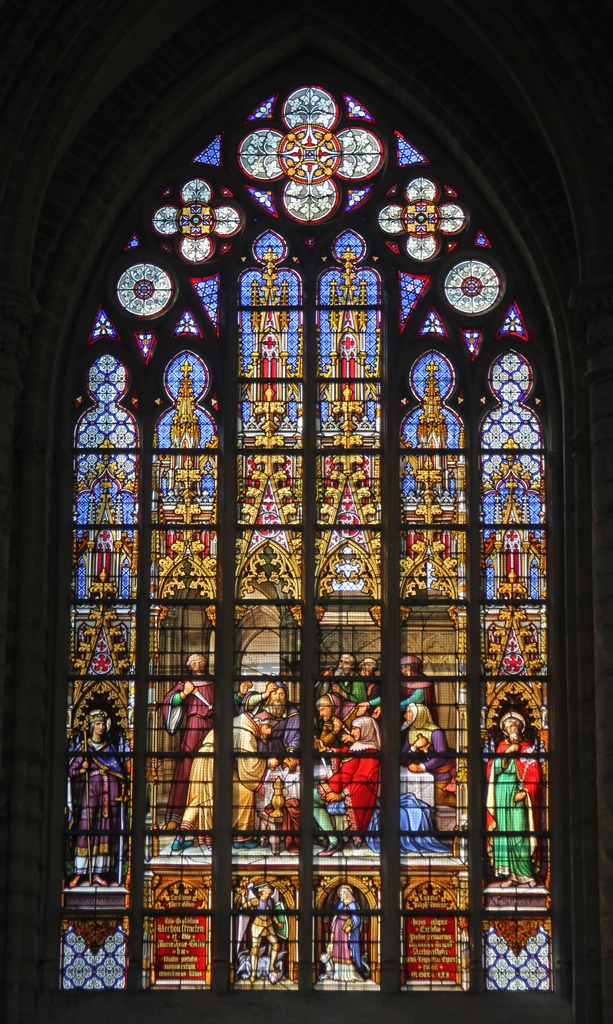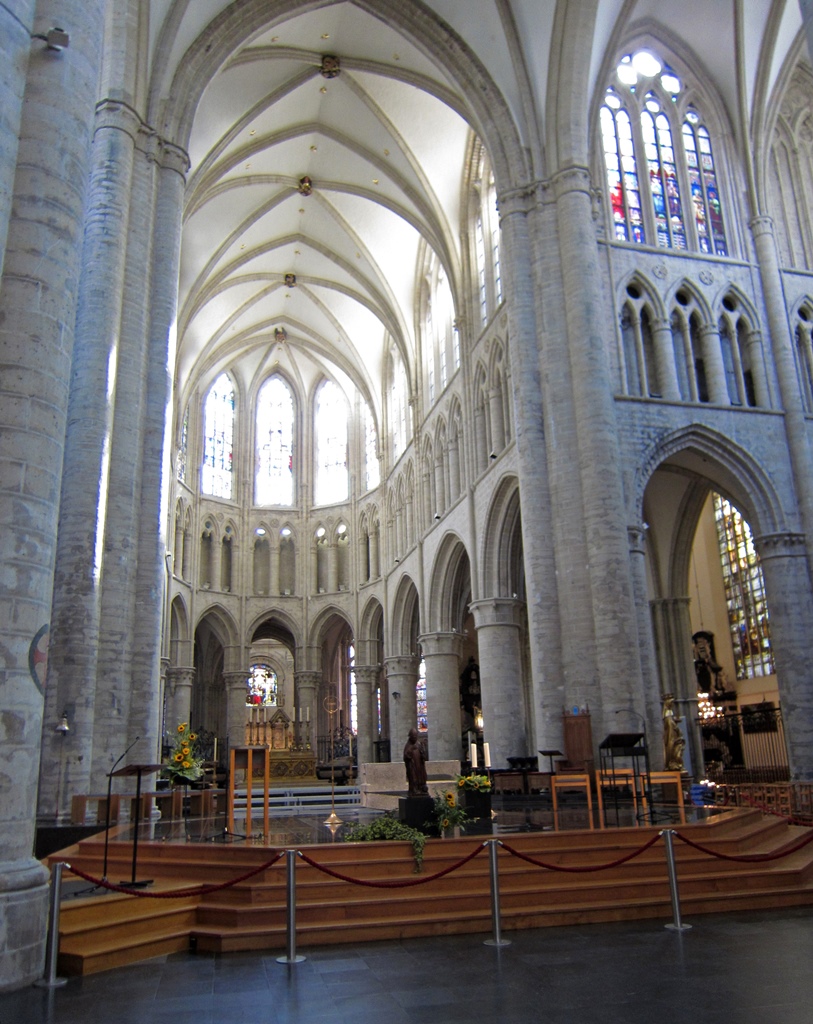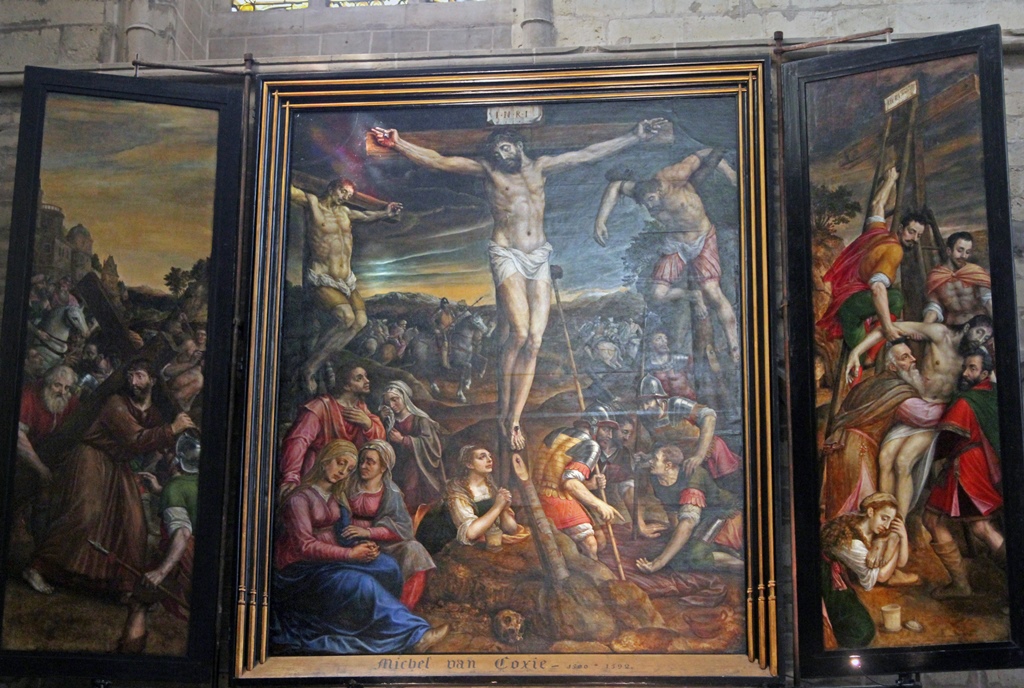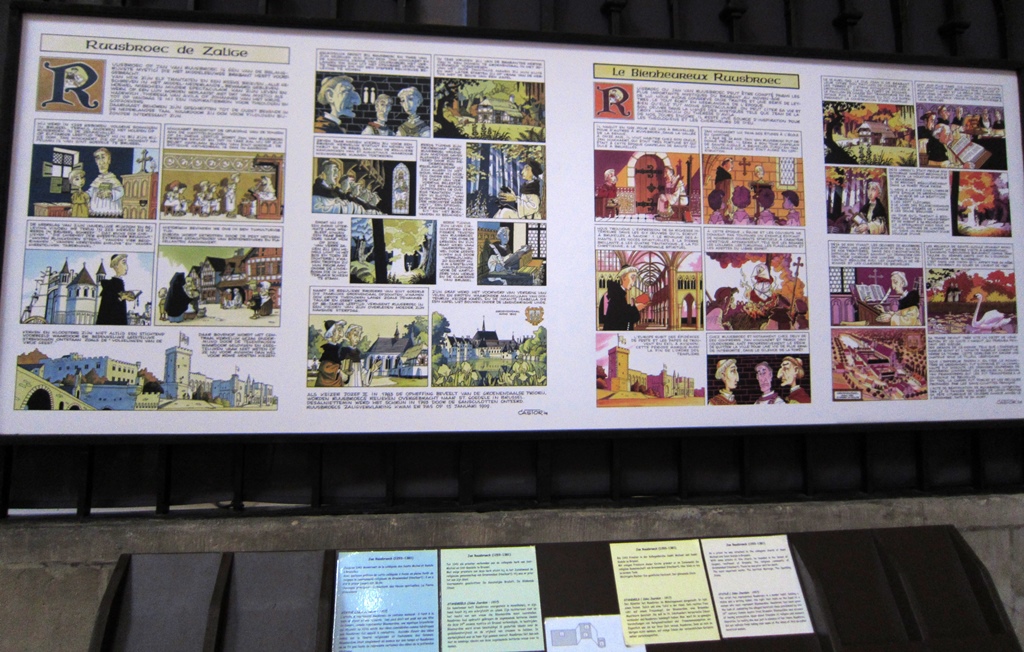St. Michael's Cathedral
The Brussels church commonly referred to as St. Michael’s Cathedral is really
called The Cathedral of St. Michael and St. Gudula. St. Michael is the archangel
(an angel among angels) who is said to have been responsible for the defeat and
eviction of Satan from heaven. St. Gudula lived in Flanders in the late 7th and/or
early 8th Centuries and is said to have lived a life of humility while performing a
number of impressive miracles. One such miracle was the miraculous relighting of a
lantern after its flame was blown out by demons. Together, Sts. Michael and Gudula
are the patron saints of Brussels (that’s a golden St. Michael on top of the Town
Hall spire). The cathedral was constructed as a Gothic collegiate church over a
300-year period and was completed in 1519. It didn’t receive cathedral status until
1962 – it now shares this status for its diocese with St. Rumbold’s Cathedral in the
nearby city of Mechelen. But it’s the church of choice for important events in the
royal family.
We found the cathedral to be within walking distance of our hotel. The figures
embedded in its façade appeared to be in pretty good condition.
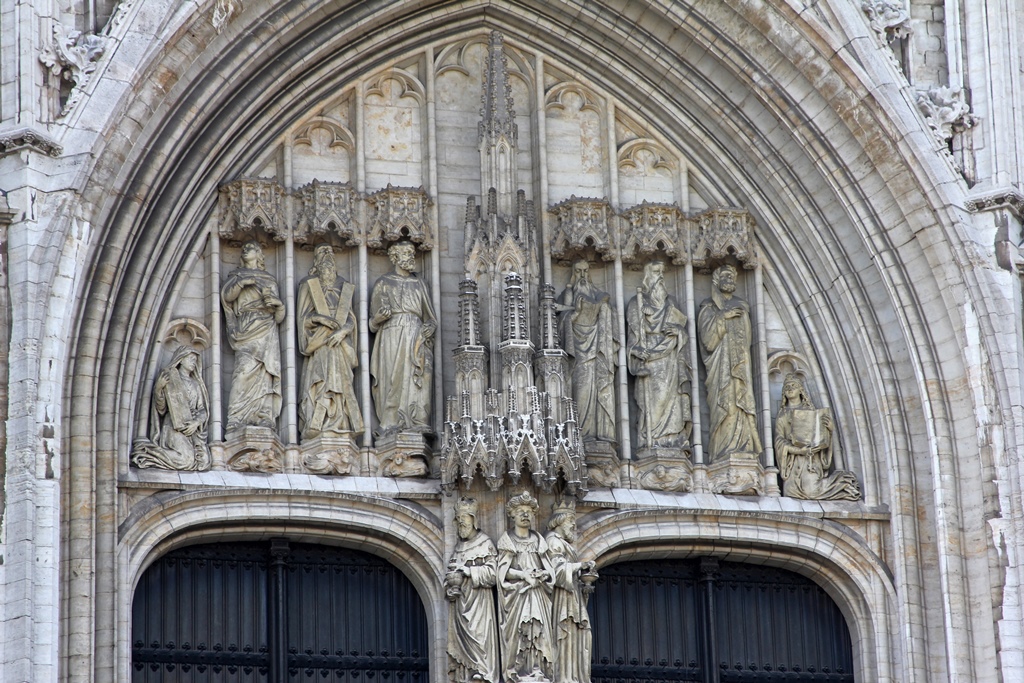
Figures Above Center Portal
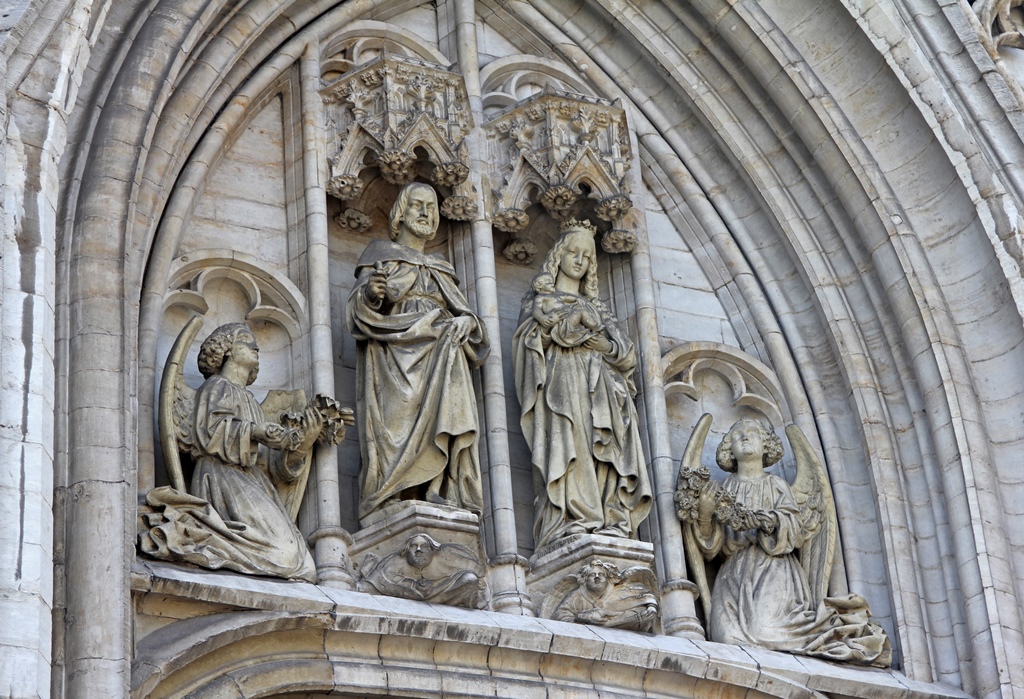
Figures Above Right-Hand Portal
We entered through the right-hand door and were welcomed by gilded figures of
the two saints after whom the church is named.
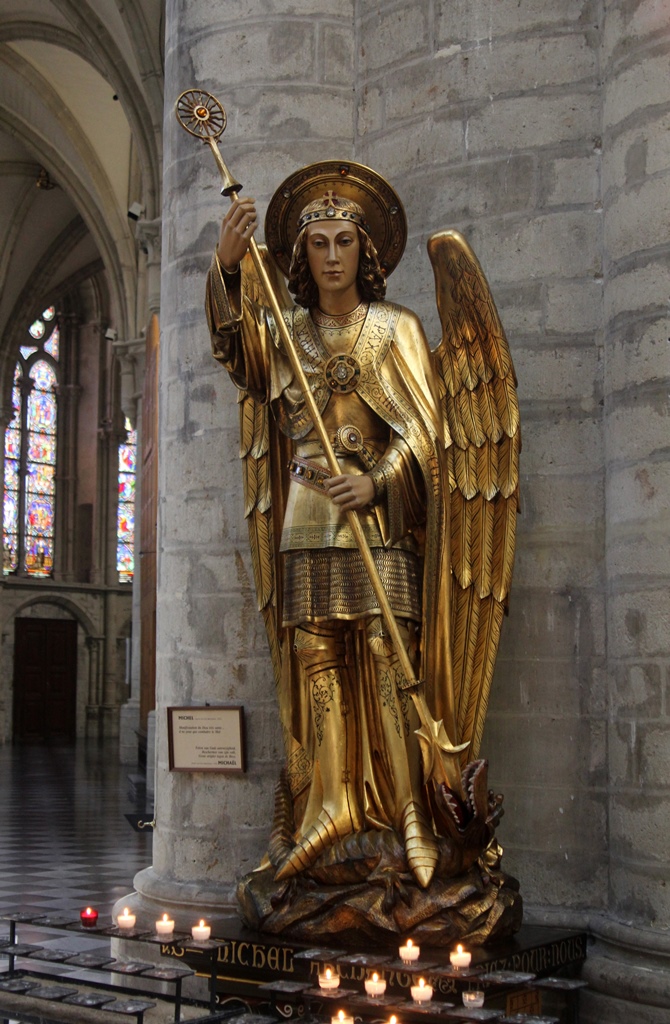
St. Michael
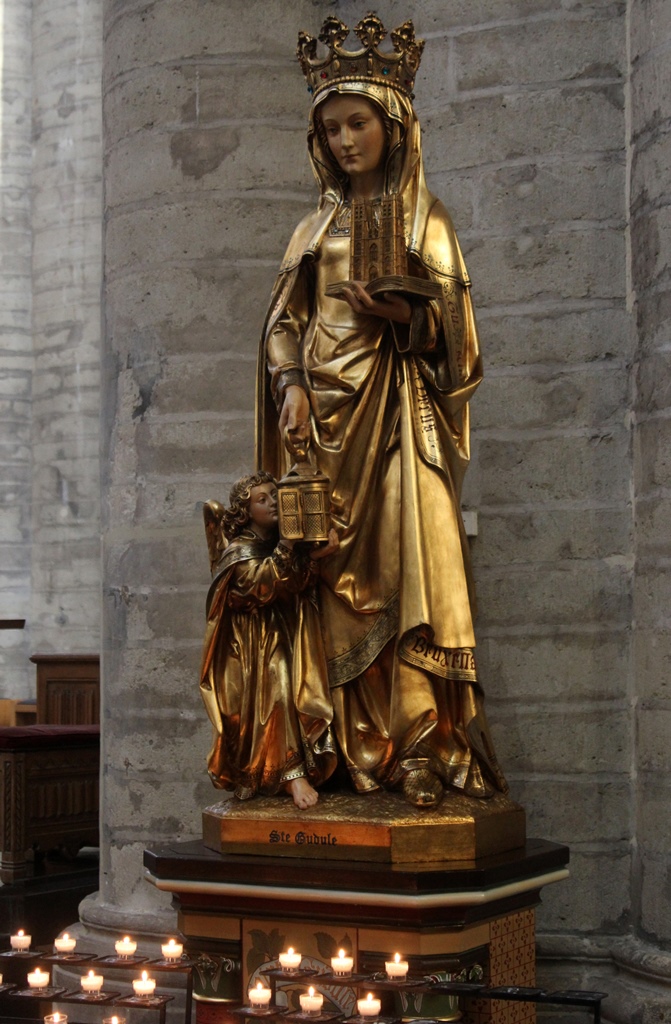
St. Gudula
The church had the usual arrangement we’d seen in other cathedrals – central
nave, columns, stained glass windows. It seemed to have a somewhat brighter
interior than some of the other cathedrals we’d visited.
The Nave

Nave, Columns and Apostle Statues
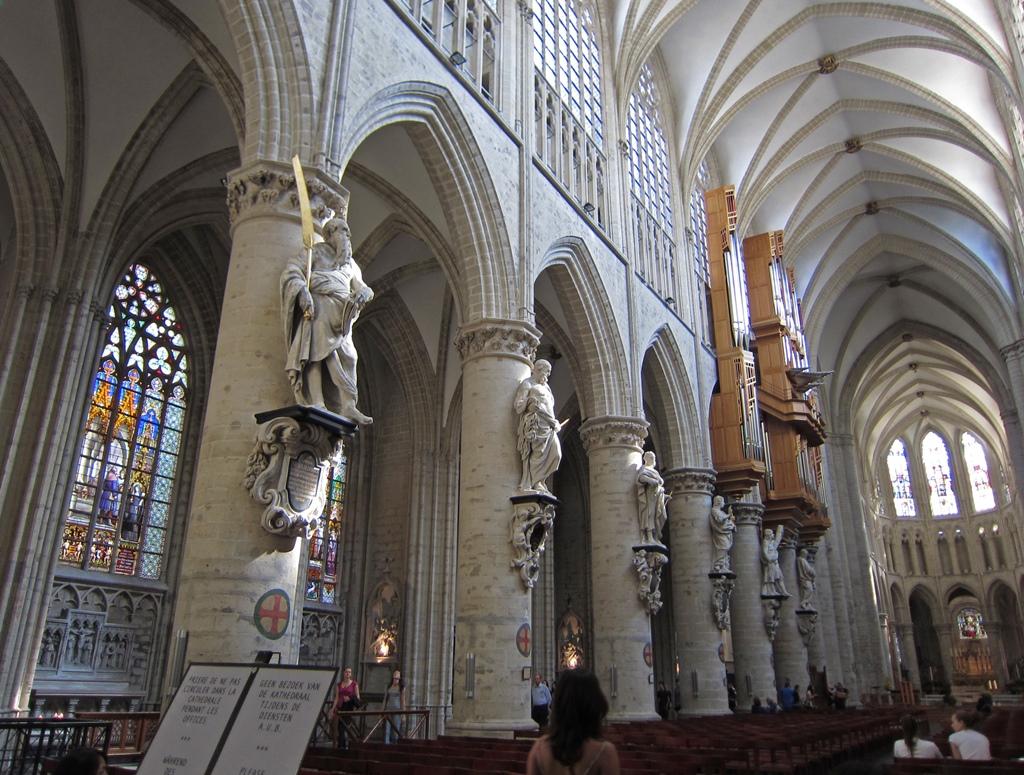
Columns, Saints and Stained Glass
Roosting on each of twelve columns flanking the nave are 17th-Century statues
representing the twelve apostles. Here are some of them:
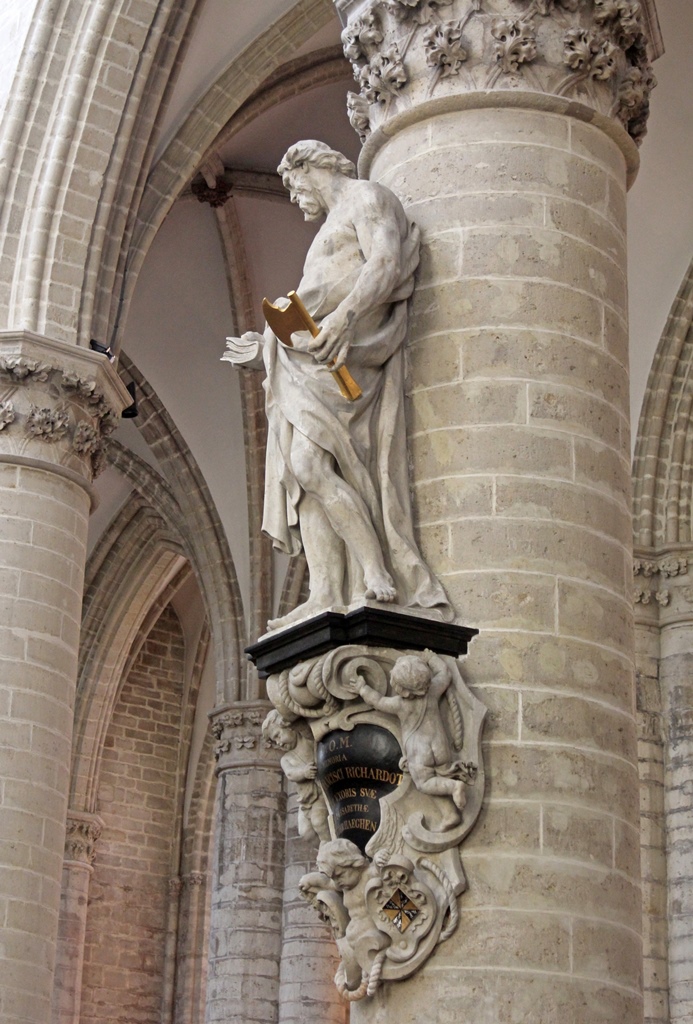
St. Thaddeus
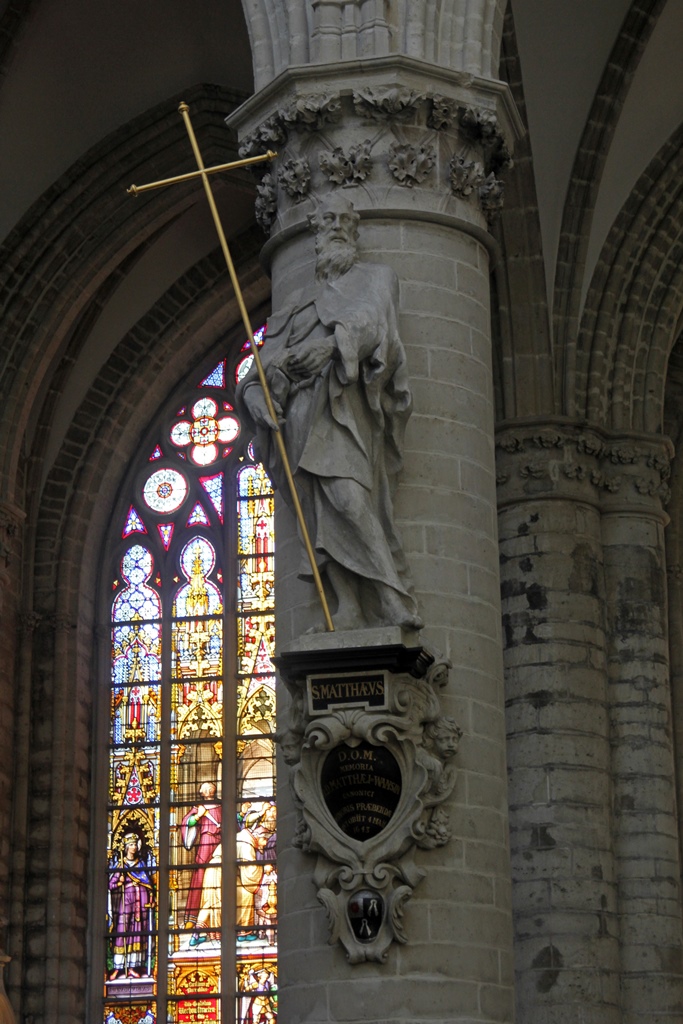
St. Matthew
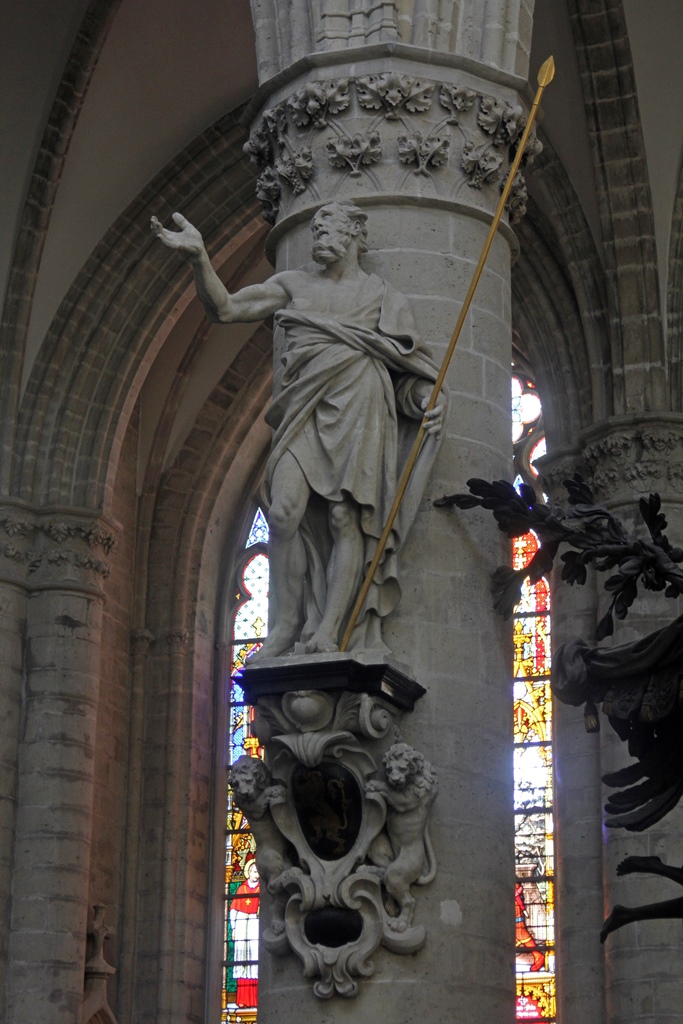
St. Thomas
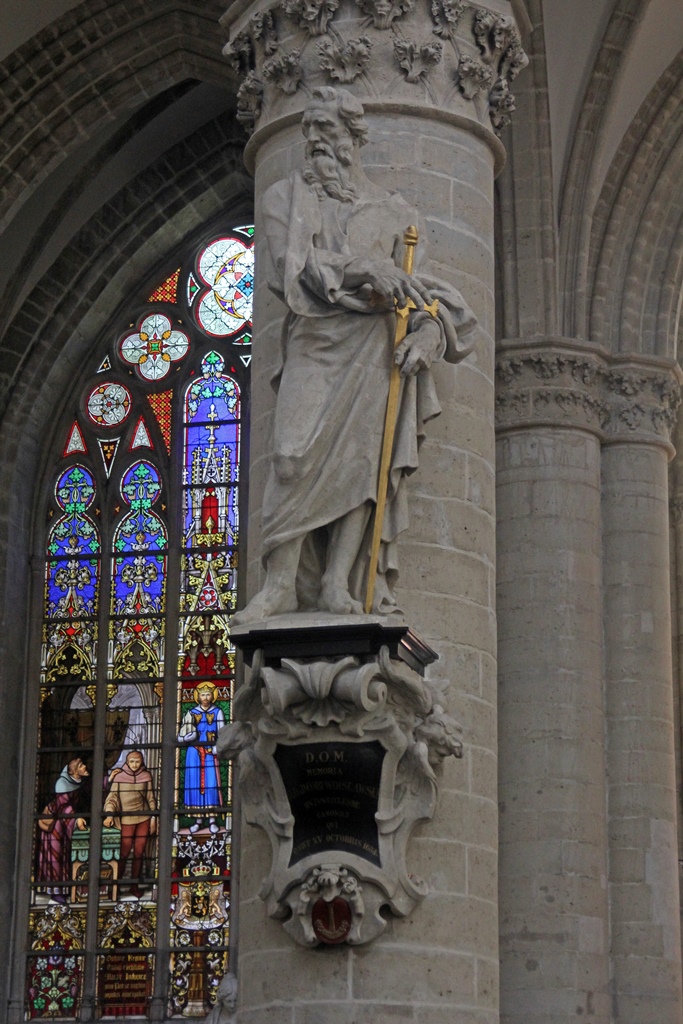
St. Paul
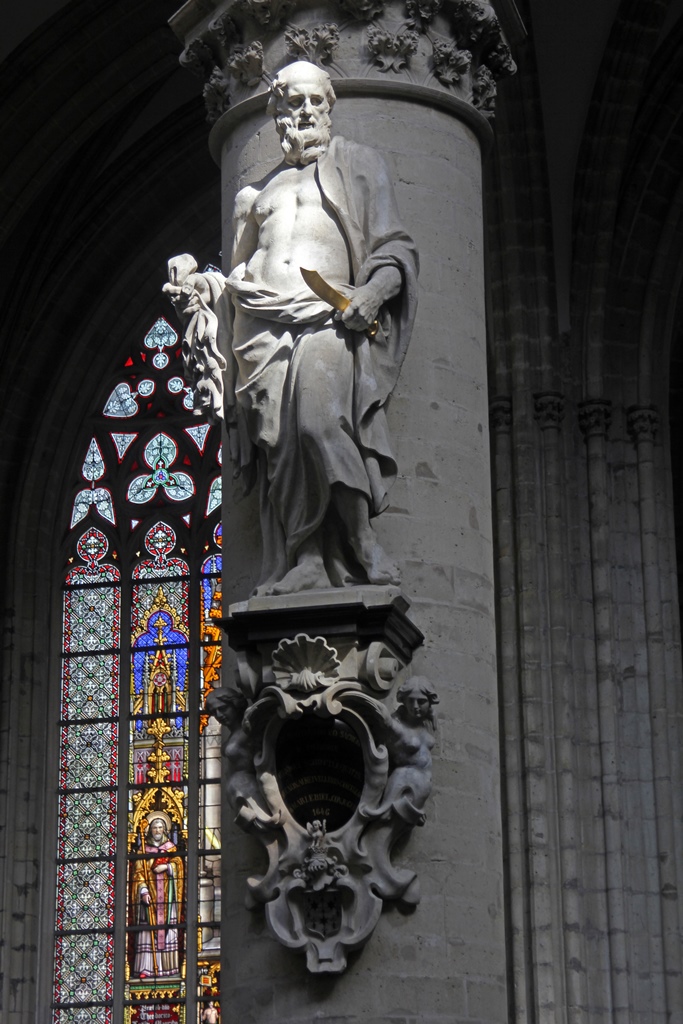
St. Bartholomew
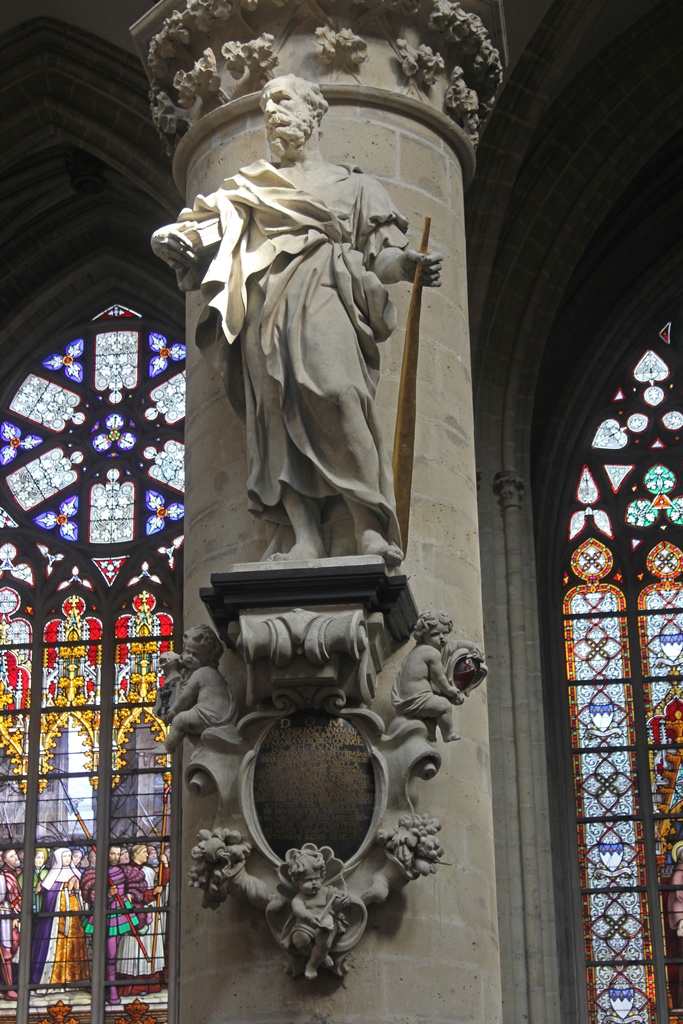
St. James the Less
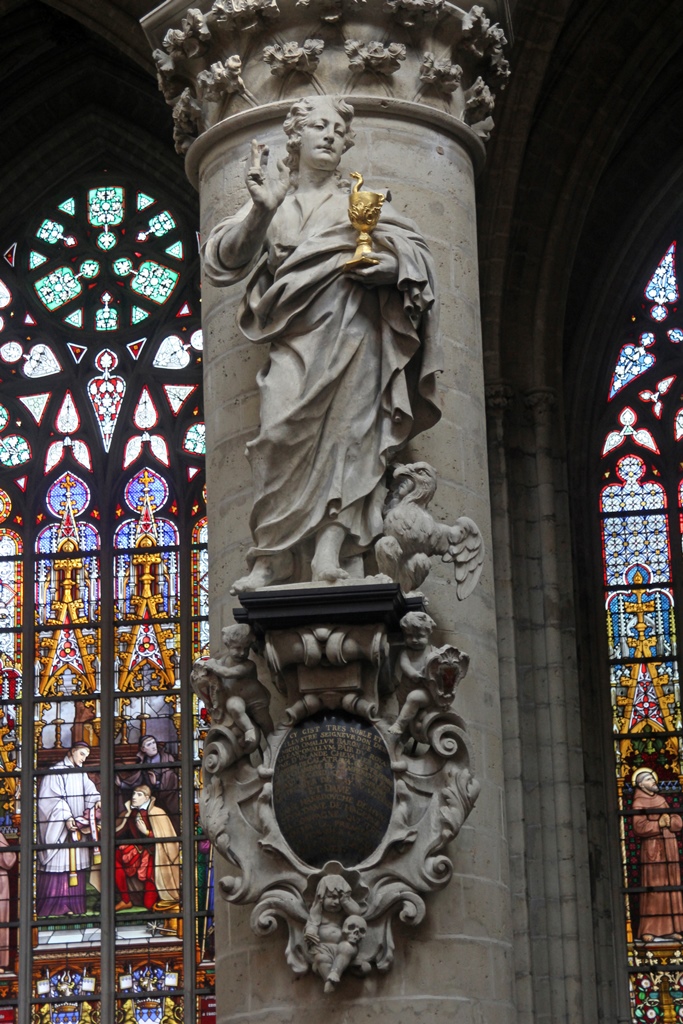
St. John the Evangelist
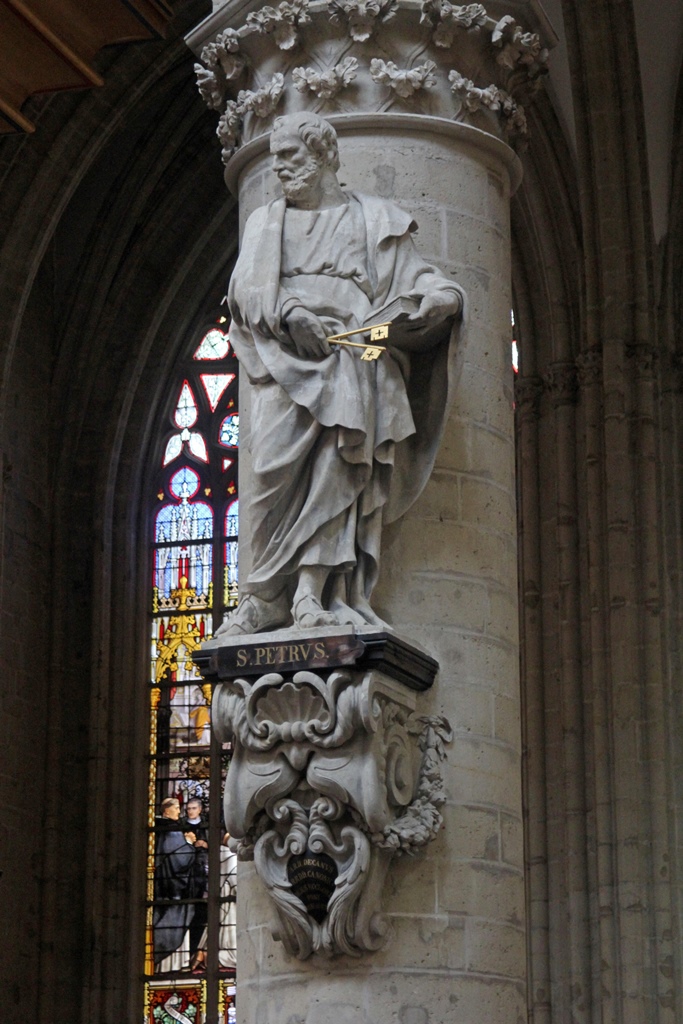
St. Peter
The cathedral’s pulpit was elaborately carved in 1699 to represent the
expulsion of Adam and Eve from the Garden of Eden.
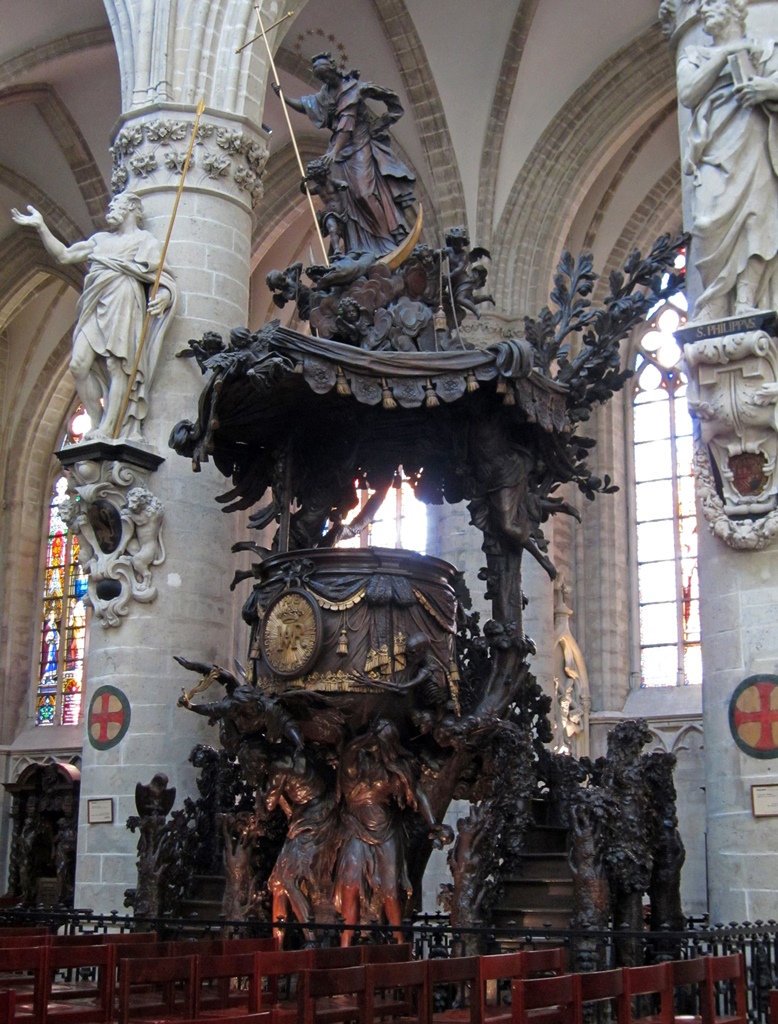
Pulpit (Hendrik Frans Verbruggen, 1699)
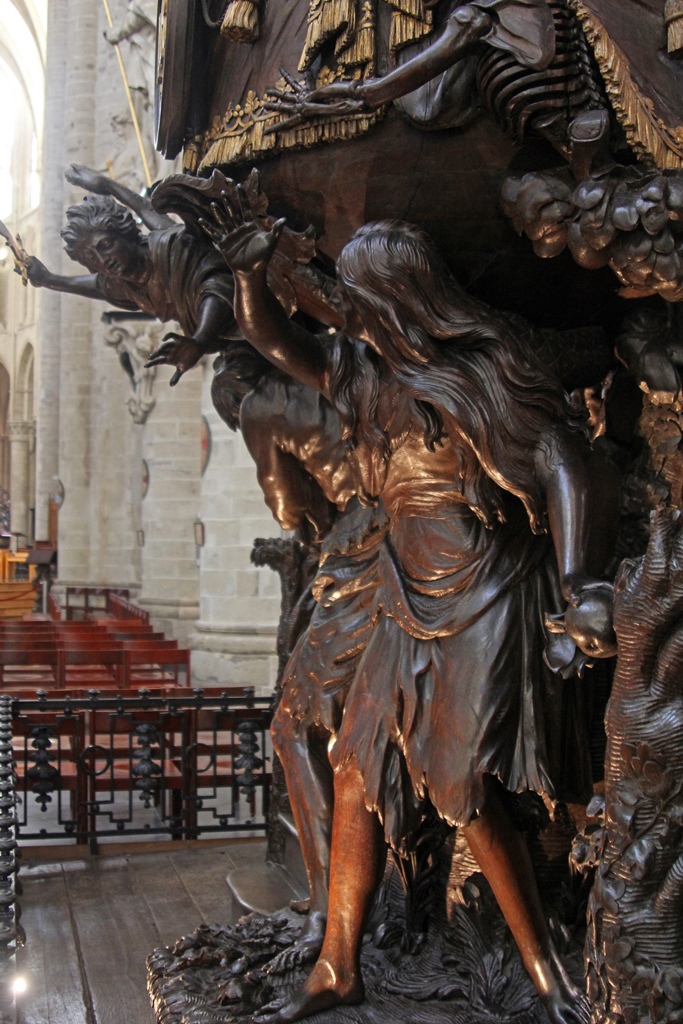
Pulpit Detail
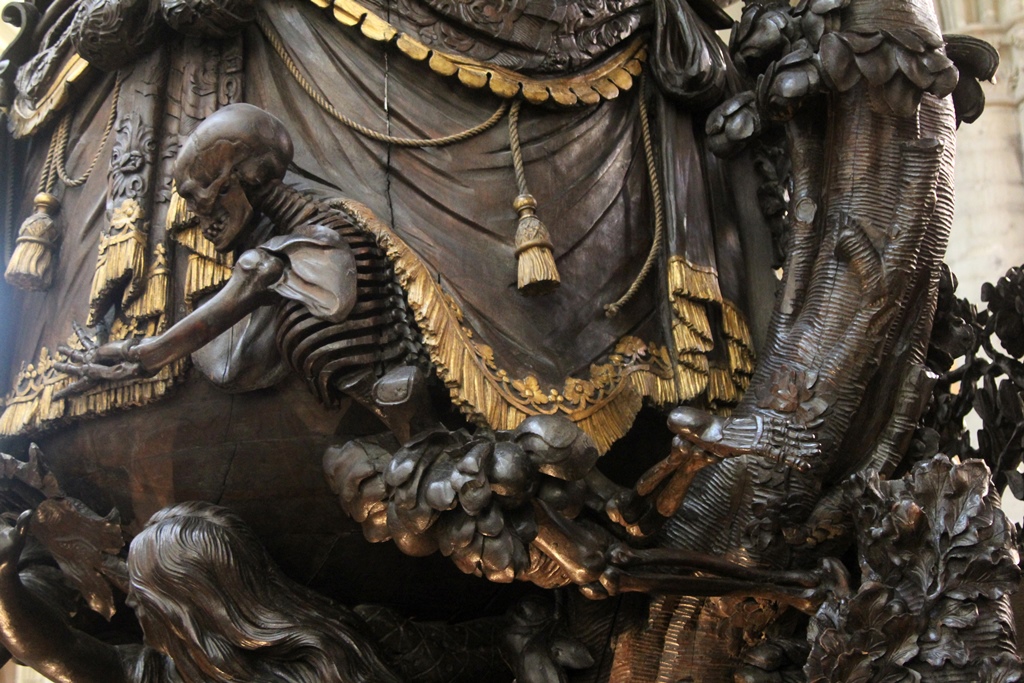
Pulpit Detail

Pulpit, Nella and Connie
Also from the 17th Century is this confessional:
Confessional (Jean Van Delen, 17th C.)
The church’s main organ was installed in 2000, by German organ-builder
Gerhard Grenzing. It has 4300 pipes, four keyboards and 63 stops.
Grenzing Great Organ (2000)
Throughout the church are stained glass windows. Most are from the 19th
Century, but there are older windows as well.
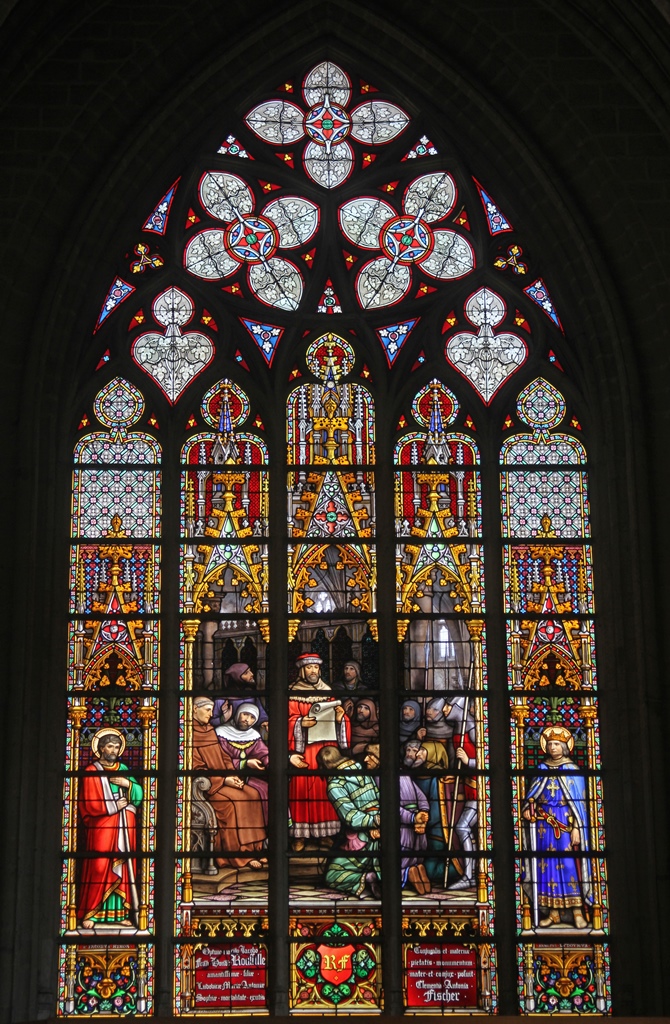
Stained Glass (J.B. Capronnier, 19th C.)
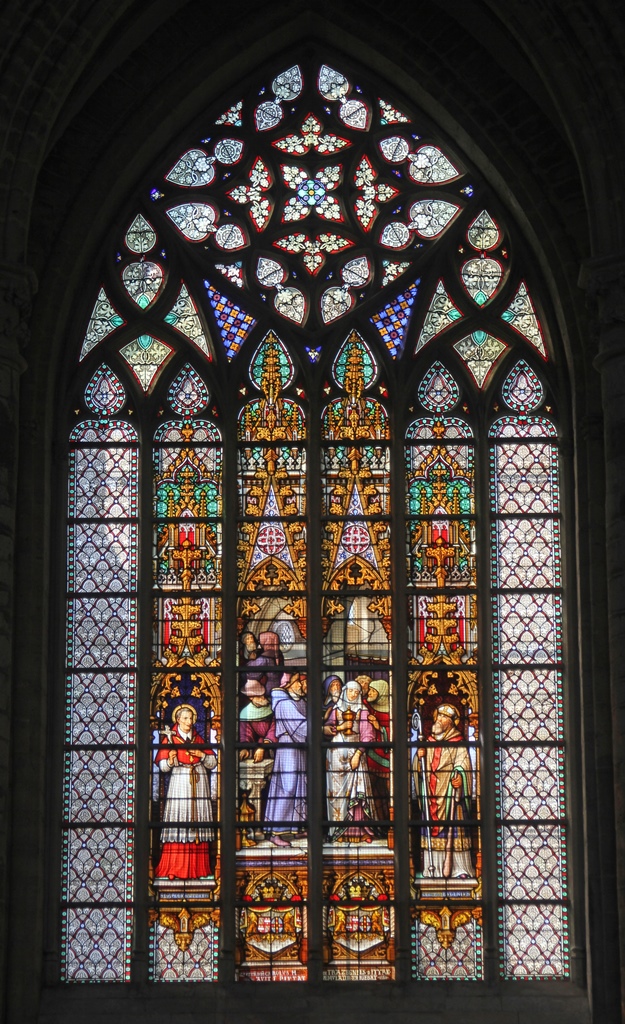
Stained Glass (J.B. Capronnier, 19th C.)
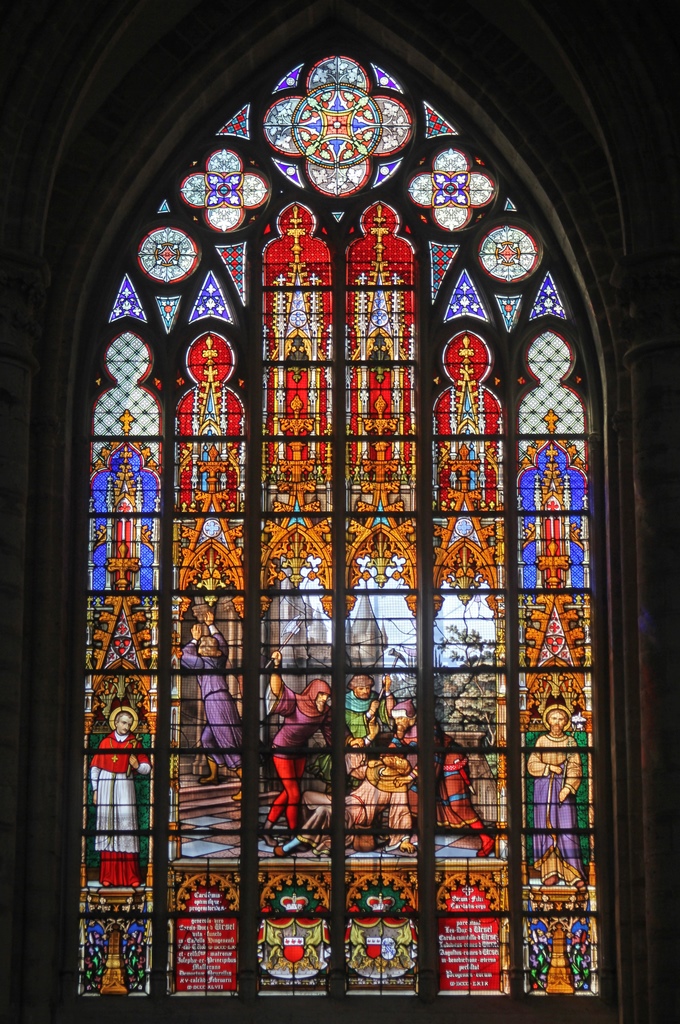
Stained Glass (J.B. Capronnier, 19th C.)
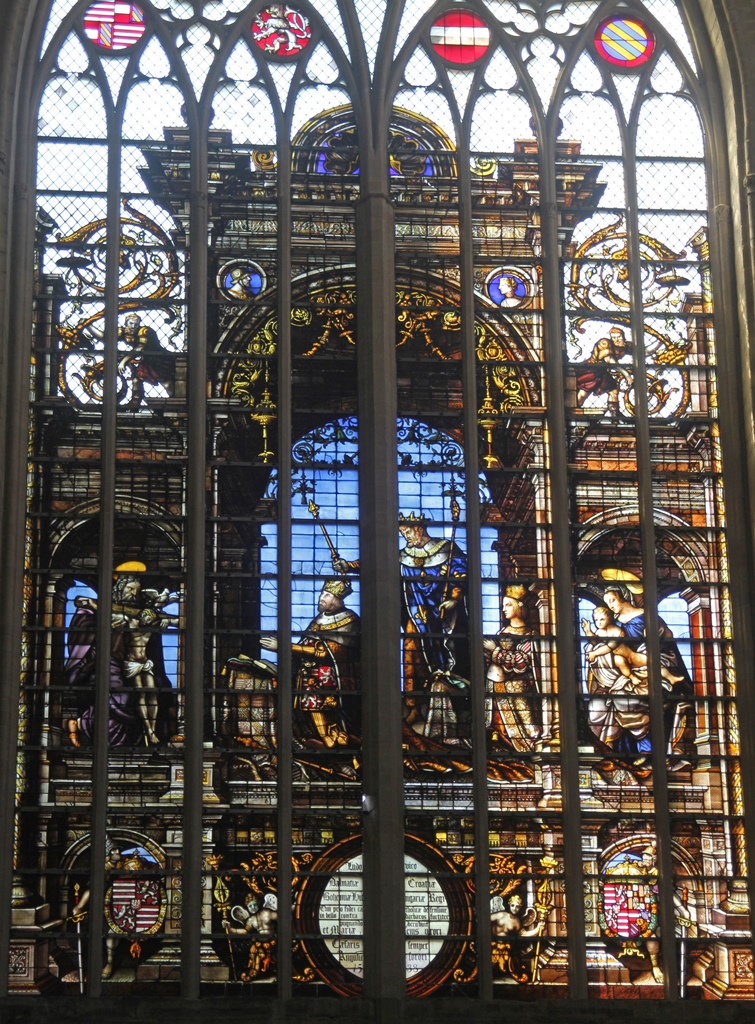
South Transept Window (Jean Haeck, 1538)
Some of the windows form a series that tells the story of the 1370 Desecration of the
Hosts. According to the story, some Jews at the time stole some hosts (communion
wafers) from a Brussels chapel for the purpose of desecrating them by stabbing them
with daggers. The story maintains that the wafers miraculously bled and remained
unharmed, despite their ill treatment. Not so for the Jews of Brussels – some number
of them were burned at the stake (there seem to be differing accounts of the number,
ranging from 6 to 20), and the rest were chased out of the city. There are similar
stories from the time, situated in different cities throughout Europe, with similar
results. The stories smell somewhat of inventions by people who wanted to do bad
stuff to Jews. It’s hard to imagine what would motivate a Jew to engage in such
behavior in a not-so-tolerant Christian-dominated city – epic stupidity would have to
be a big part of the equation.
Jews Stabbing Wafers
Of similar vintage to the organ is a shiny new platform at the transept crossing.
Platform at Transept Crossing
Working forward, there is a 19th-Century altar toward the front, and in the
apse there is an altarpiece from 1538.
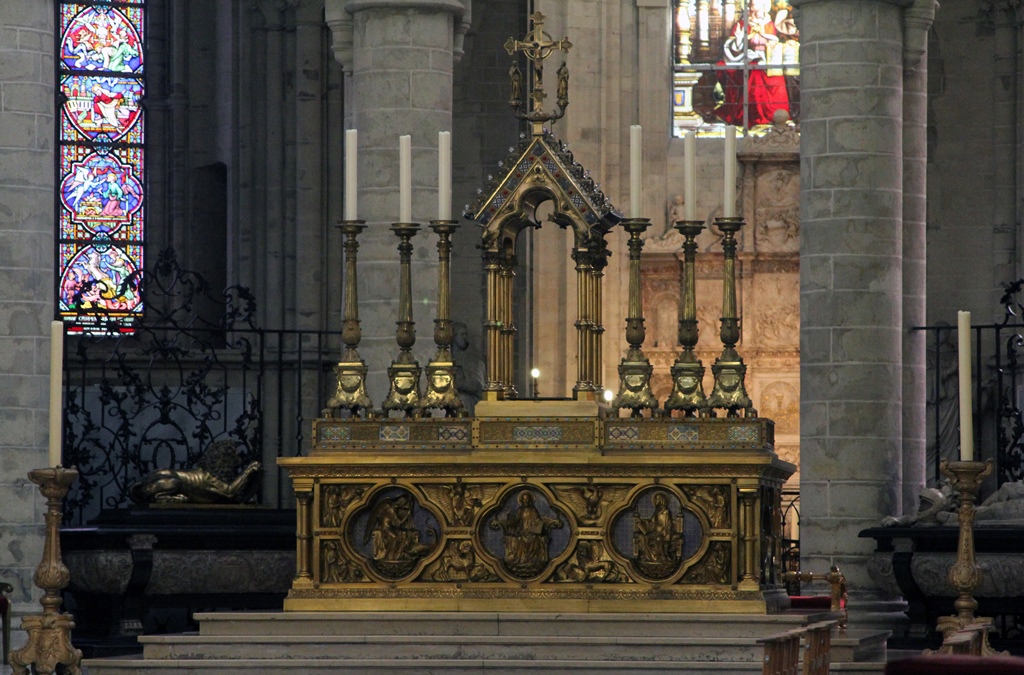
Altar (Lambert Van Rijswijck, 1887)
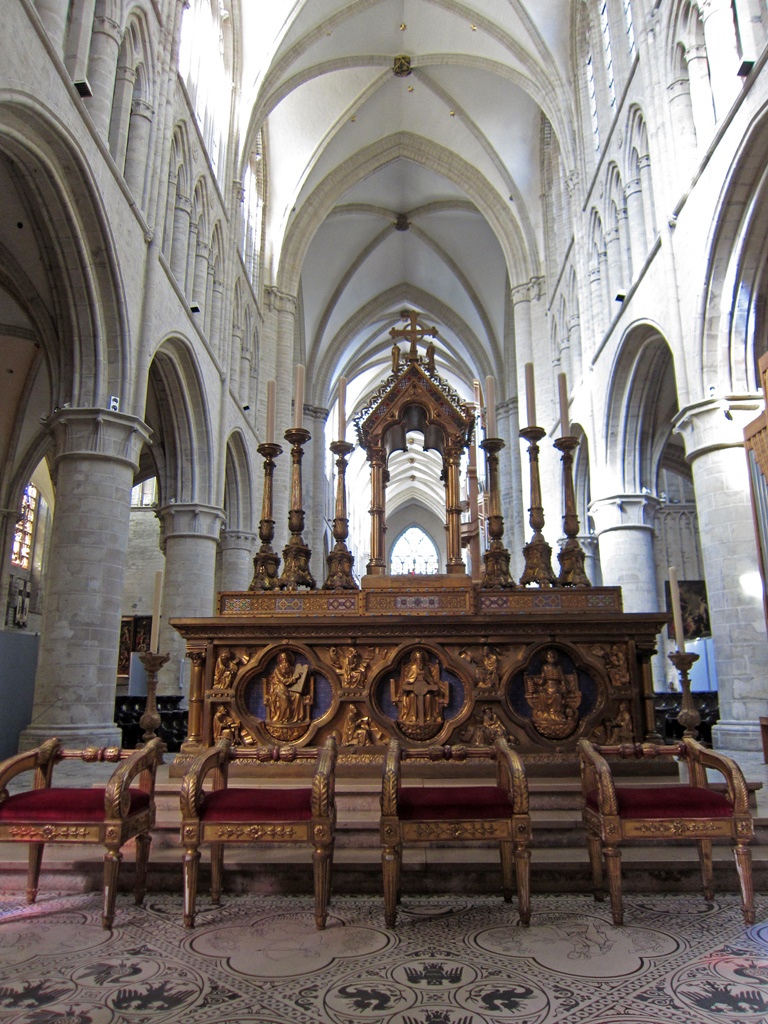
Altar and Seats
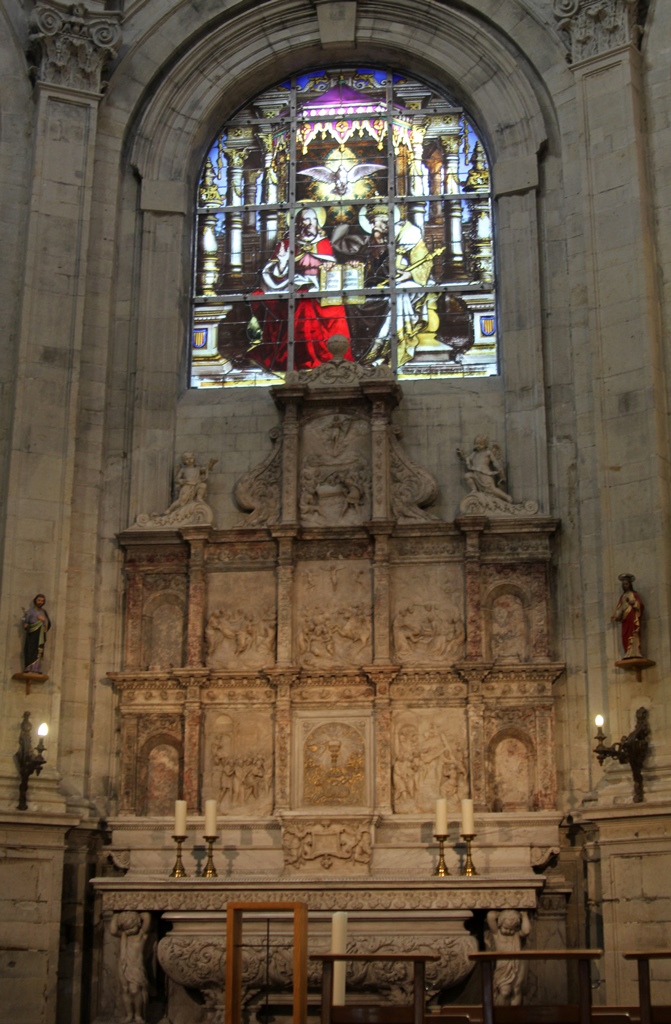
Altarpiece (Jean Mone, 1538) and Window
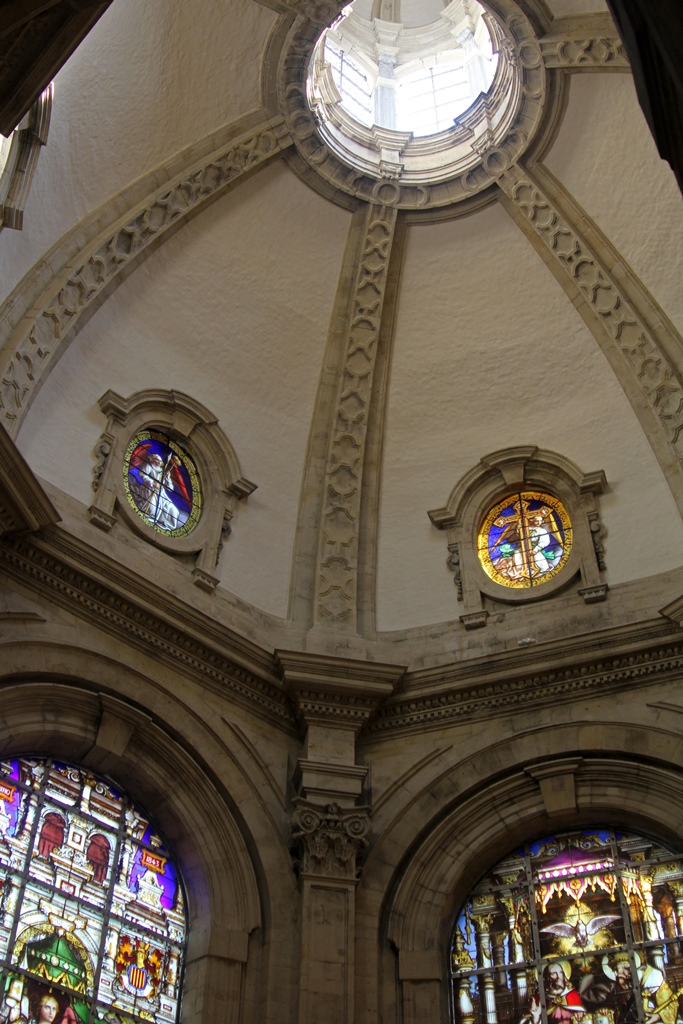
Dome
There are a number of chapels throughout the church. A large one is called
the Chapel of the Holy Sacrament.
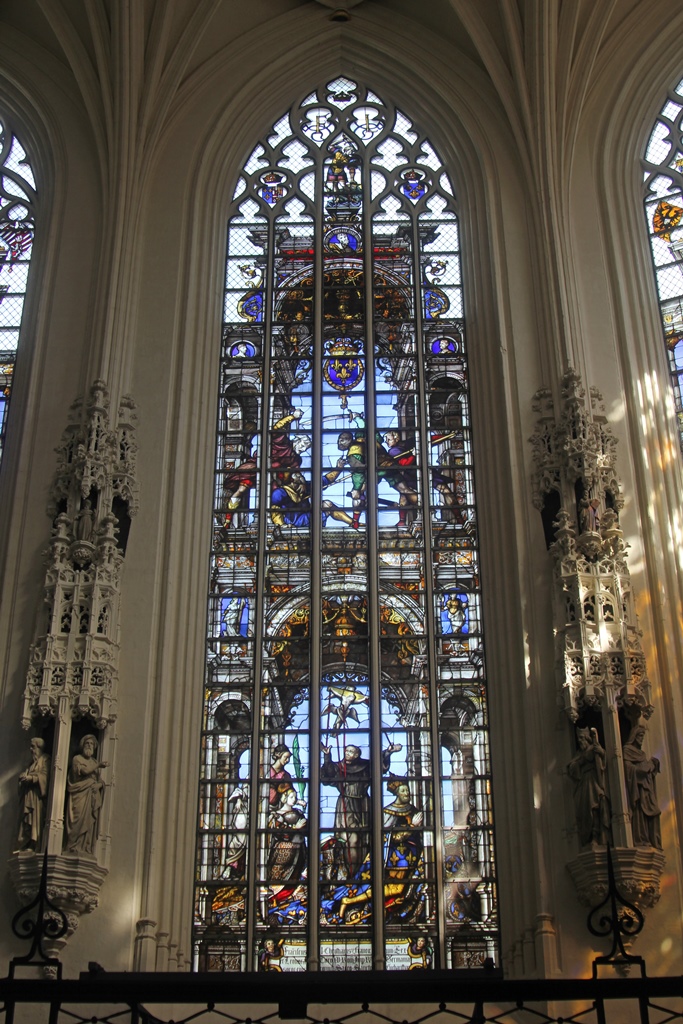
Stained Glass (Jean Haeck, ca. 1540)
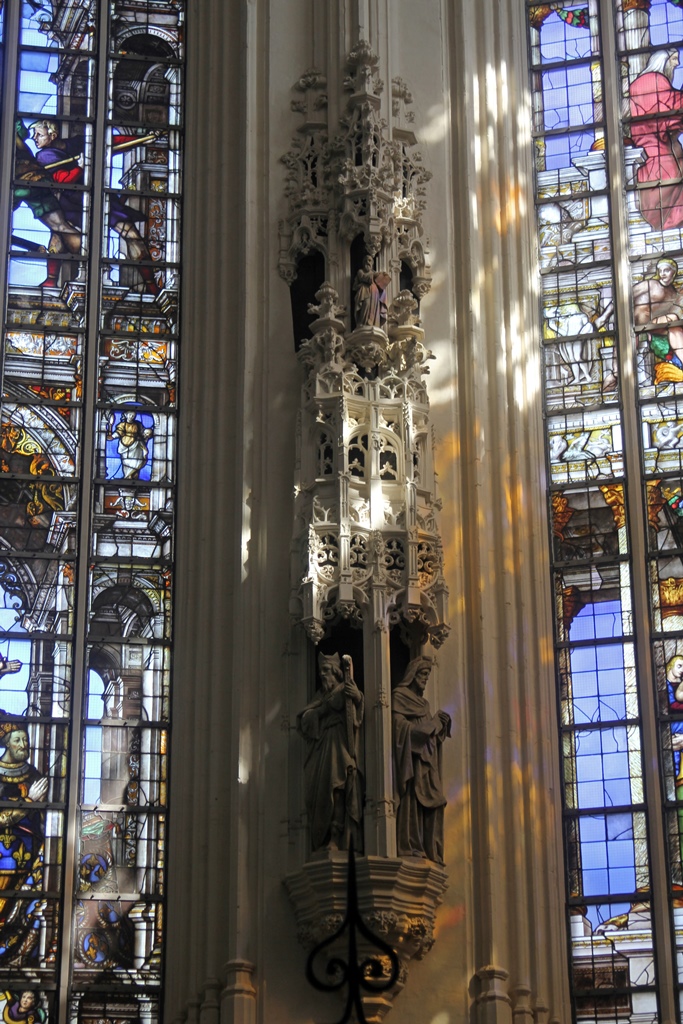
Sculpture, Chapel of the Holy Sacrament
The smaller chapels display a variety of tombs, memorials and artworks.
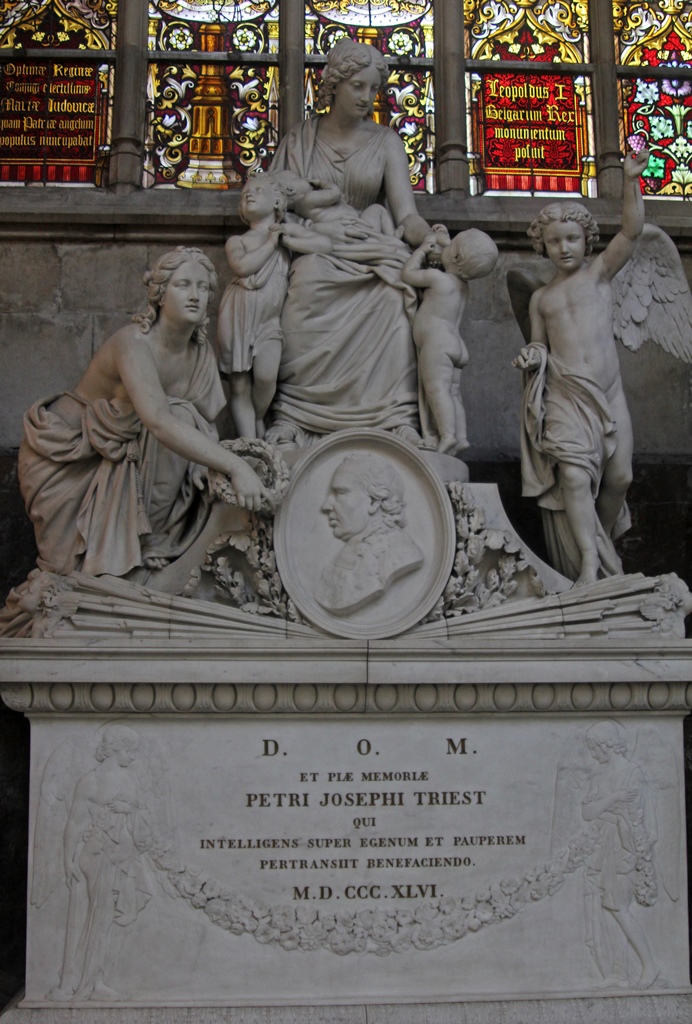
Tomb
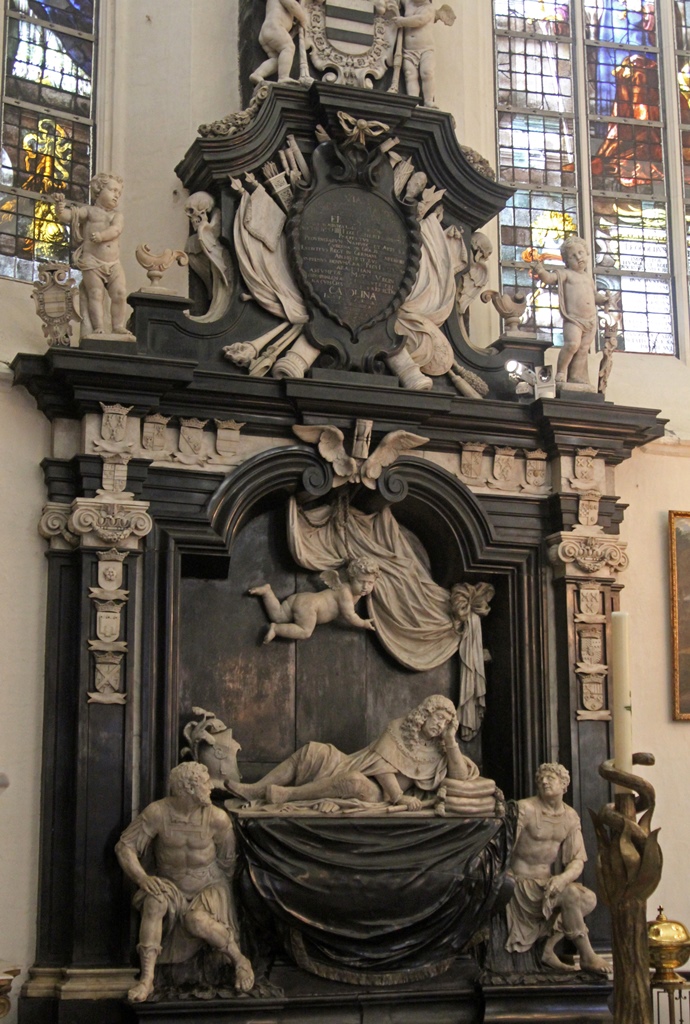
Tomb
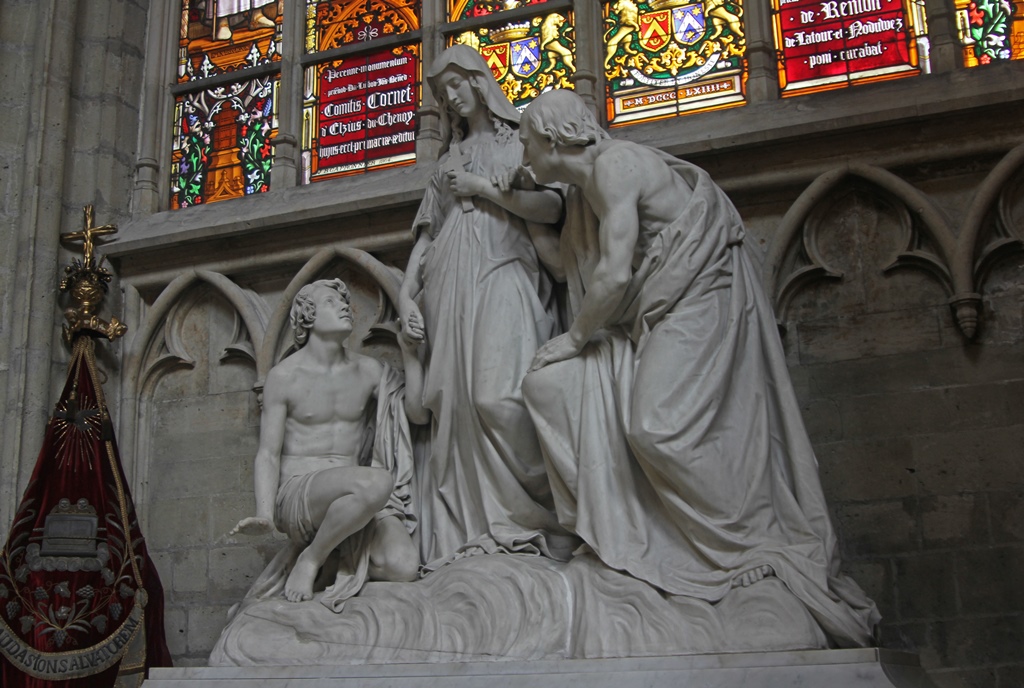
Chapel Sculpture
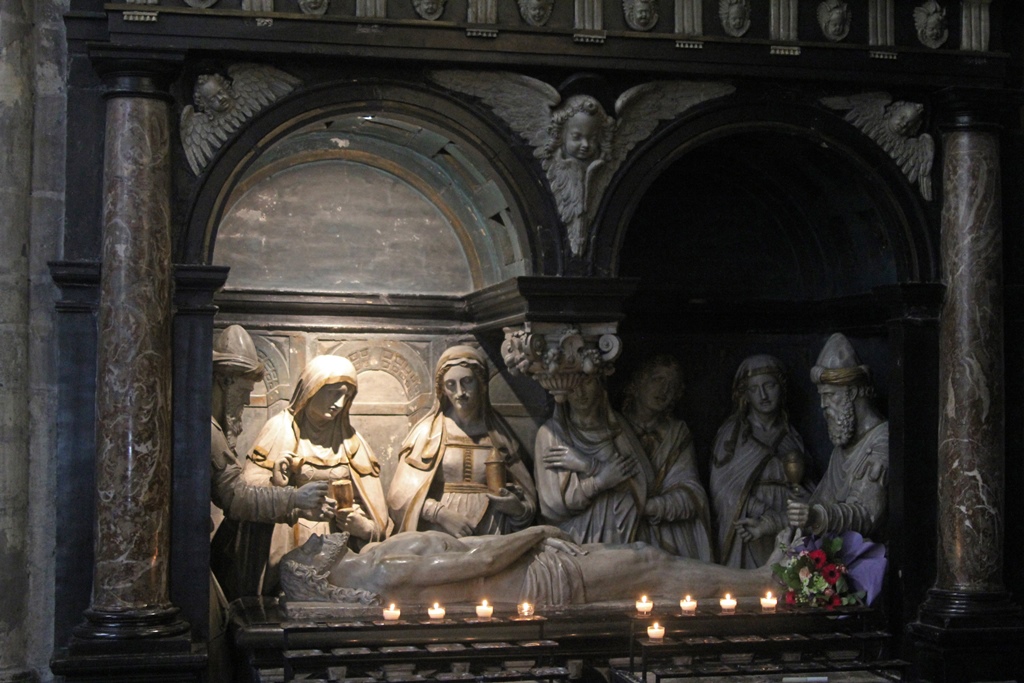
Statue Group
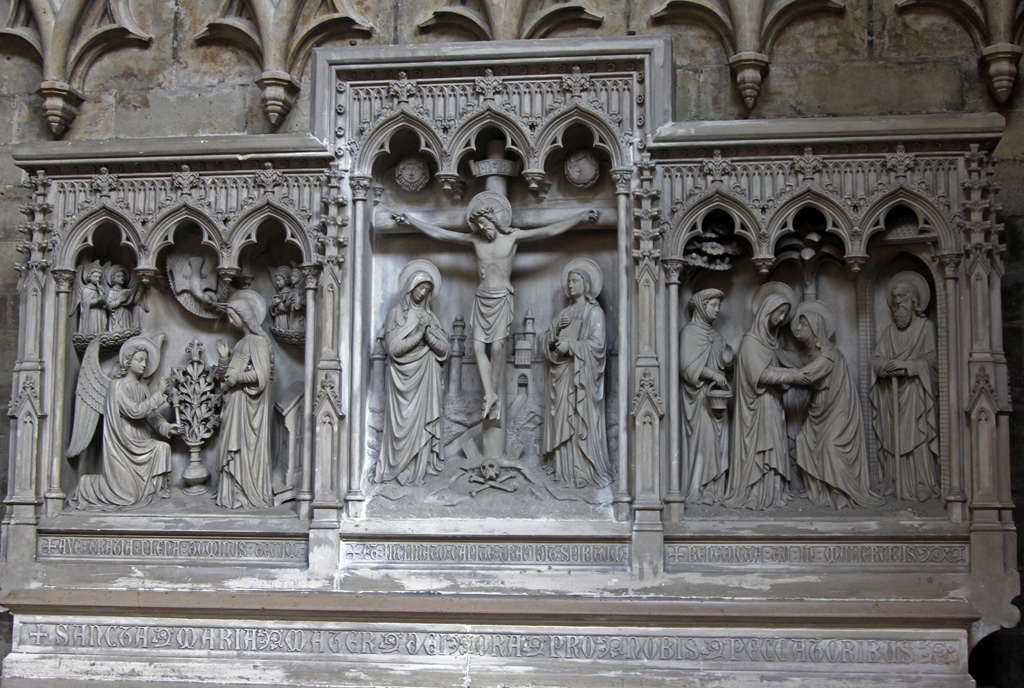
Relief
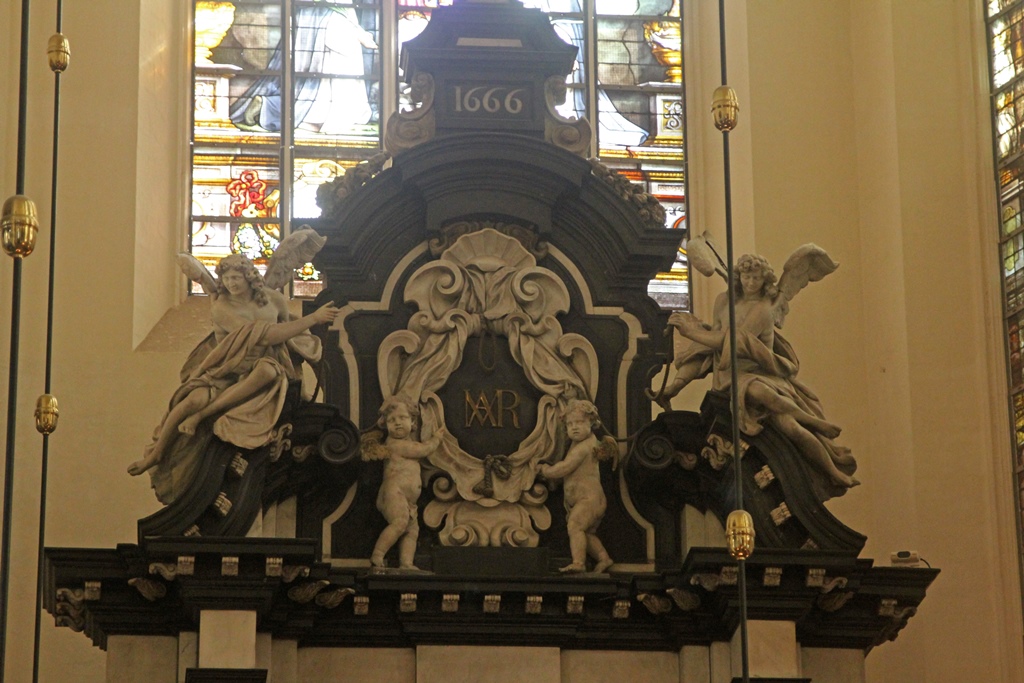
Chapel Decoration
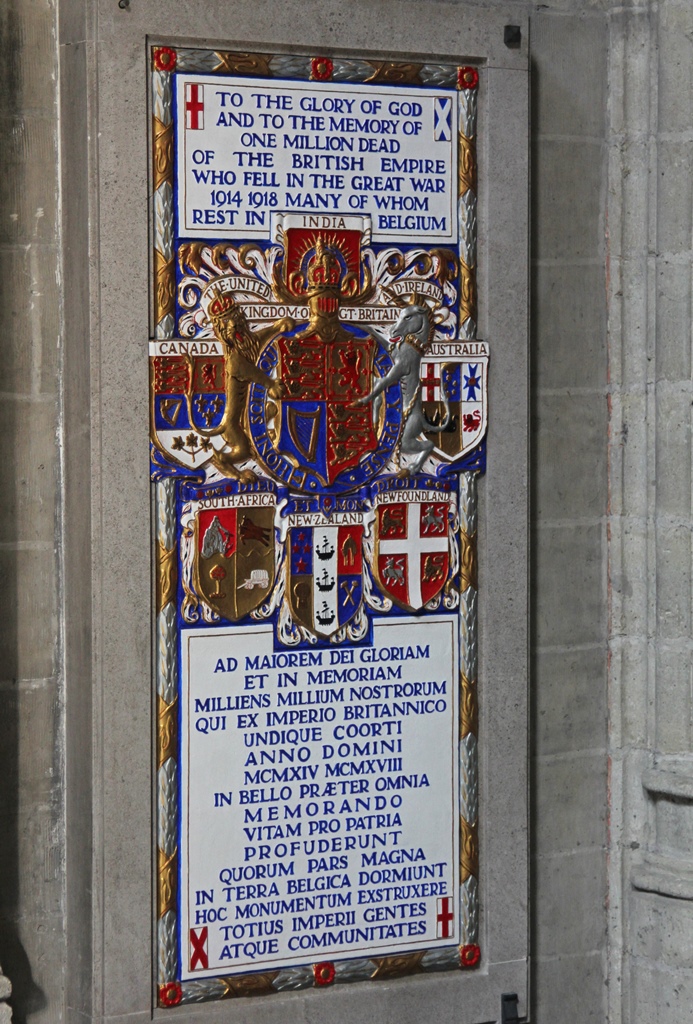
Memorial to World War I Dead
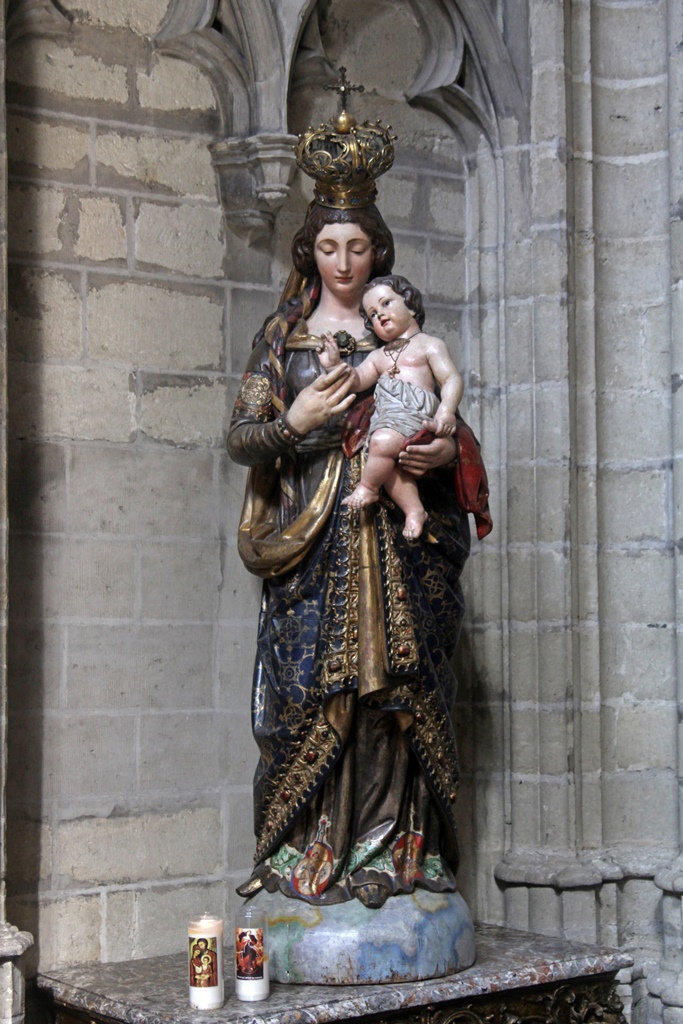
Madonna and Child
Crucifixion Triptych (Michel van Coxie, 16th C.)
In our exploration of the church we noticed another product of the 21st
Century – a display of what appeared to be Catholic comics. Apparently an
effort to appeal to a younger generation, we weren’t able to tell whether
they were funny or not, as we didn’t speak the language. I suspect probably
not – the Catholic establishment doesn’t have a reputation of being
particularly comical. But if they really want to appeal to a younger
generation…
Catholic Comics
From the cathedral we headed back up the hill we’d climbed a couple of days
earlier. Our plan was to visit the Royal Museums of Fine Arts.

